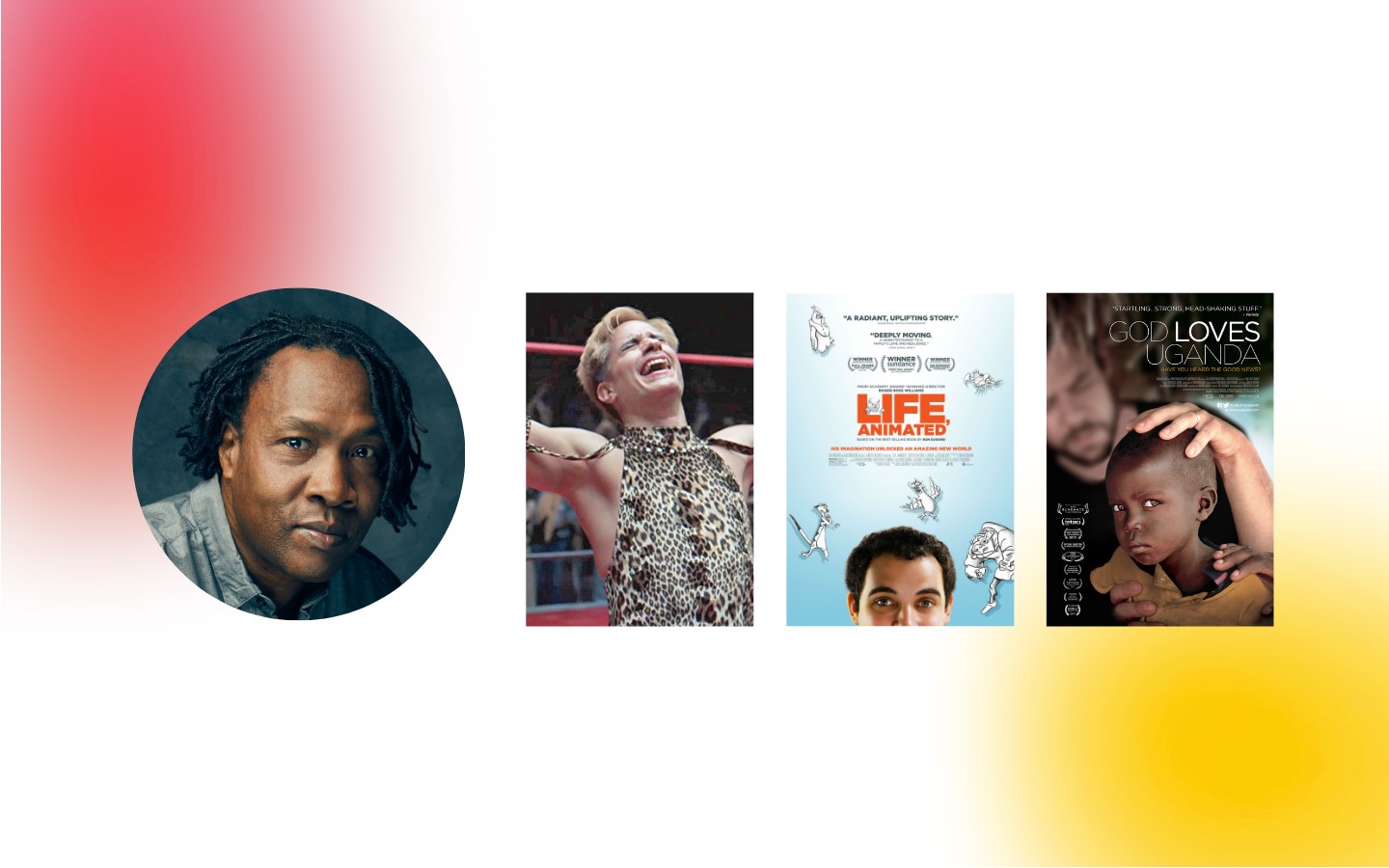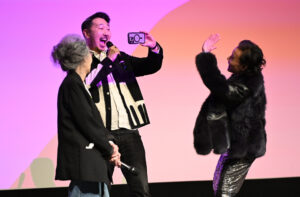By Stephanie Ornelas
It’s hard to believe that the 2023 Sundance Film Festival is just around the corner, and among the impressive slate of films premiering in Utah is Roger Ross Williams’ Cassandro. His film follows a gay amateur wrestler (Gael Garcia Bernal) from El Paso who rises to international stardom after he creates the character Cassandro, the “Liberace of Lucha Libre.” In the process, he upends not just the macho wrestling world, but also his own life.
Earlier this week, Williams joined Sundance Collab’s Studio Series to share his own experiences as an evolving filmmaker. Having started his career as a journalist, he found himself thriving in the documentary world. But what makes Cassandro especially unique is that it will be William’s first fiction film. Known for his award-winning documentaries like Life, Animated (2016 Sundance Film Festival), Music by Prudence, and Travelling While Black, his projects are artful, and they take a deeper look at what it means to have accessibility.
Williams proudly calls himself “a Lab junkie.” Mainly because he has been through almost every Lab at Sundance Institute. He also sees the incredible value that comes with being involved with the organization’s programs.
“Sundance has helped me so much in my career. I’ve done the Documentary Edit Lab, the New Frontier Lab, the Screenwriting Lab, and the Directors Lab,” Williams says during the webinar.
This year, he’ll be heading to the Festival for Cassandro, which will be screening in the Premieres section tomorrow at The Ray Theatre in Park City, Utah. And Collab listeners are curious how he was able to make the transition from documentary filmmaking to fiction.
Lean into your instincts
One of the first things Williams encouraged Collab students to do was to not to be afraid to take a chance with their unique ideas.
“I worked for almost all the major networks. The last major network I worked for was CNN, and I became totally disillusioned with the mainstream media. So, I really just took a chance. I said, ‘I’m going to quit my very stable job,’ and I took out all the money I had in the world, I bought a camera, and I got on a plane to Zimbabwe because I had heard about this amazing singer living with a disability. She couldn’t use her arms and she didn’t have legs. I saw some footage of her singing, and I just knew I had to make a film about it.”
That’s when the world was introduced to Prudence Mabhena. Music by Prudence would go on to win the 2009 Academy Award for Best Documentary Short.
Unique storytelling can play a huge role in helping us understand important issues
Williams also looked back at his groundbreaking project Traveling While Black. The film is a cinematic VR experience that immerses viewers in the long history of restriction of movement for Black Americans and the creation of safe spaces in our communities. Williams transports audience members to historic Ben’s Chili Bowl in Washington, D.C. The viewer shares an intimate series of moments with several of the patrons of Ben’s as they reflect on their experiences of restricted movement and race relations in the U.S.
“It’s a very powerful experience, and [this project] has sparked so many powerful conversations. VR can help us see what we have never been able to,” Williams explains. His project was awarded a Webby and VR Piece of the Year by Forbes Magazine.
Rejection isn’t always a bad thing
Williams might be a Sundance “Lab junkie,” having been involved in a number of Institute Labs over the years, but he learned a very valuable lesson when working on Cassandro: rejection can lead to great things.
“I love a challenge. I have to keep challenging myself in order to stay excited and motivated. I love working in different mediums, and I think it’s really exciting to challenge yourself in different types of storytelling,” says Williams.
“I made a documentary short about a real person, Cassandro, for the New Yorker Presents series on Amazon. This was a very popular story in The New Yorker [several years ago]. Ten minutes into interviewing [Cassandro], I said, ‘This is my first scripted feature.’ He was so inspiring to me on so many levels.”
But bringing this film to life and in front of audiences wouldn’t be as easy as Williams initially thought.
“It took us a long time to get to a place where we could submit a cut to the [Sundance Institute] Screenwriting Lab. We finally submitted… and it got rejected. I was devastated.” Williams explains that he was in shock, mainly because he had been involved in so many Sundance Institute Labs already, and had even won awards at previous Festivals.
“It was the best thing that ever happened to me because it made me really dig deeper and work harder,” he says, looking back. “I resubmitted a year later, and got into the Screenwriting Intensive Program. That was an amazing experience. Eight out of those 12 people in the Lab got invited to the Directors Lab — the coveted Sundance Directors Lab. I was lucky enough to get selected for that. When you set foot on those hallowed grounds of the resort for the Directors Lab, you’re suddenly aware of all the incredible directors who started there.”







